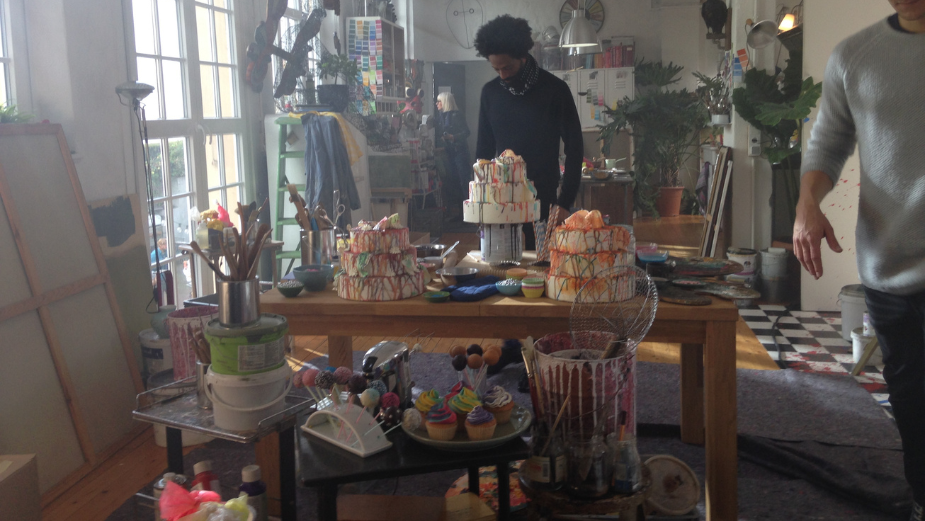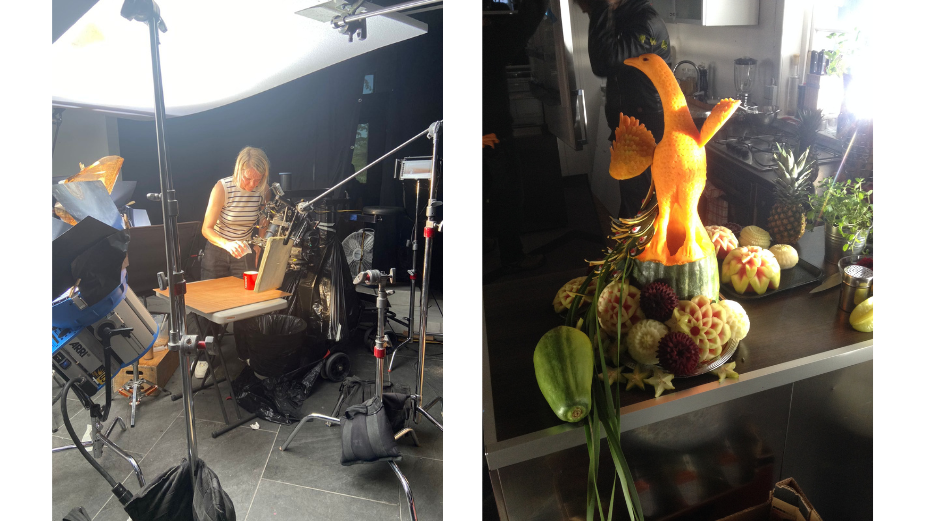
Plating up Perfection with Mathea van Kann

“My journey towards food styling wasn’t conventional,” explains Mathea Van Kann when delving into the history behind her career.
“I completed a course in agriculture, where I shared classes with ecotrophologists during the first semesters. Additionally, I also studied chemistry for a few semesters.” The combination of being surrounded by nutrition, household management and economics students, and her interest in chemistry meant that while there was a passion for the subject matter, there wasn’t a clear path indicating what Mathea would do.
“Naturally, a key prerequisite was to have a passion for cooking and eating,” she explains. “However, due to the nature of my studies, I was more fascinated with how the chemical composition of ingredients can be manipulated to stabilise or transform dishes than the course material itself.” This focus on the technicalities behind gastronomy made Mathea keen to dive deeper into the subject.
“I wanted to understand how things work on a molecular level, and still do,” she explains.
While conducting extensive research and studying, the idea of curating cuisine, in front of a camera, found its way to her. “Film piqued my interest after reading an article on food styling,” she says. However, it was practicality that won out. “Instead, I opted for a practical and versatile first job, where I did everything from building sets and creating mock-ups to sculpting.”

Through this more traditional start, Mathea learnt the basics of traditional production and food styling, equipping her to deal with every part of the process. “Then, I started working on drinks and encountered unique challenges with beer and coffee,” she says. “Beer styling is also quite a challenge. How can I stabilise the foam, crema, and bubbles in filter coffee? My studies proved useful in this regard.”
With a love for the ingredients and the product, as opposed to just the aesthetics, Mathea’s interest in her work means she champions authenticity. “I strive to maintain the product's naturalness, ensuring that it remains edible or drinkable.” But of course, this means learning the intricacies of each product and how to make them sing in front of a camera. “Foams are particularly unsteady when subjected to high on-set temperatures,” she explains, reflecting on her tests with beers.
“In my early attempts at making filter coffee, I had immense difficulty with the bubbles. The stability of the item is affected by the air pressure, among other factors,” she notes.
Speaking about each product individually, it’s clear that there’s no blanket approach to this aspect of filmmaking, and Mathea has honed her craft continuously.“Although it seems straightforward, things require consideration,” she says. “So, it never becomes monotonous. My favourite thing to do is to experiment and research in my test kitchen, always searching for new techniques. There are always new discoveries to be made and I often find that traditional methods should be re-evaluated, and there may be room for improvement.”
With this attention to detail, it’s no surprise that unusual or particularly tricky projects land in her lap. “Due to my background in sculpting and chemistry, I receive various projects that necessitate particular attention. Crafting a large peacock out of an assortment of fruits and vegetables using the Thai carving technique for a refrigerator is my most cherished project.” Delving deeper, Mathea explains, “The peacock was nearly one metre tall and had to be kept damp and cool throughout the day to prevent drying out.”
And when asked about the process behind shoots, it’s clear that it varies for each one. Mathea explains, “Products typically require preliminary testing. I frequently check how well my food products can withstand high temperatures and last throughout the day. Nevertheless, I like to begin with a testing period, specifically for cakes or cookies, and adjust the recipe until the customer receives the finest possible outcome.”

Now at supersensory, her work has been digitised, creating an entirely different process than the traditional method she started out with. Mathea says, “Since I've switched to digital food styling, this isn't necessary for many items and simplifies a lot of things. Nevertheless, I like to begin with a testing period. This process is comparable to what transpires on a film set.”
However, there are also differences. “Digitally, we obtain customer approval in advance,” she explains. “Next, we start the digital process. The product undergoes scanning, and once again, we face the challenge of maintaining its flawless appearance until the scanning process concludes.”
She continues, “Following this, the major advantage of our digital assets is apparent. I mainly use a sculpting program, enabling me to perform on the computer what I could do on set. I tweak, alter, and modify colours as well as at times reassembling everything in a wholly unique manner. In addition, it is completely eco-friendly, long-lasting and reusable.”
Mathea shares how this digital method comes with additional benefits, aside from the obvious. “There is no waste and no food is thrown away. Lastly, the product offers tremendous versatility. Through digital means, it is much easier to get incredibly close to food and create interesting camera movements and lighting effects, compared to on a real set.” Not to mention, it allows clients to physically see a version of the product, putting them at ease to trust the process more wholeheartedly.
However, Mathea adds that time constraints and limited opportunities for experimentation always impede shoots. “The presentation of food in an enjoyable and appetising manner has evolved over time, with more customers accepting unique forms of presentation that aren't the typical pack shot or plate dish. There is more work to be done, but progress is being made.”

She continues by sharing some of the new techniques at play, “Macro shots that create appetite appeal without revealing the product right away, mixed with returns that reveal the product draws the viewer into the spell and creates tension.” This means there’s plenty of room for experimentation, “Unfamiliar perspectives, being directly in the cup, playing with proportions, there are so many beautiful possibilities that are far from all exploited or seen too often.”
This shift and increase in risk-taking is something both clients and stylists have had to embrace to create unique results. “It takes bravery and trust in consumers to move away from the traditional way of presenting food,” says Mathea.
“The changing food industry, including globalisation, brings new and exciting options to the kitchen,” she says as she reflects on her childhood relationship with gastronomy. “Looking back on the vegetable-based meals I ate as a child, it's understandable why I resisted for so long. But I'm appreciative of the inventive dishes and ingredients inspired by other cultures and travel.”
Mathea finishes with a lasting sentiment, “Food is wonderful!”












